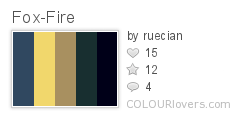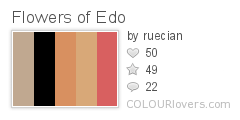Called “pictures of the floating world,” or Ukiyo-e, the main artistic genre of Japanese Woodblock printing first reached popularity during the second half of the 17th Century, and lasted into the 20th Century. Although initially challenged by limited colour, woodblock printing soon become a defining method of producing art. Capturing landscapes, theatre, and even more intimate scenes, Ukiyo-e captured hearts and tastes as well, as they could be inexpensively mass-produced. Traditional Japanese art usually relied on high contrast and a flattening of the dimensions in the piece.
For more on how the art is created: Diary of Carving Woodblocks

Perhaps most famously in this genre — and still produced today — is that of Katsushika Hokusai’s work The Great Wave Off Kanagawa(above), part off his series One-hundred Views of Mt. Fuji, wherein Mt. Fuji is but a hill in the shadow of the tsunami. The wave seemed to reach out for the people desperately clinging to boats with claws, as if the size and arc weren’t enough to suggest its ferocity. This piece, though one of the more popular ones, is marked as the one that is the least Japanese in technique of his works.

Like the The Great Wave, high contrast is employed in many woodblock paintings. While dark colours draw the eye more, they often serve to set off the lighter colours as the focal point in traditional Japanese art. Seen above is another piece from the Views of Mt. Fuji Series by Hokusai that shows heavy blues and light yellows together.
 |
Of course, not all woodblock art was by Hokusai. This 1857 print from Hiroshige’s 100 Famous Views of Edo draws upon folklore, depicting a gathering of kitsune (foxes), giving yellow light only to the foxes. Depictions of kitsune or their possessed victims may feature round or onion-shaped white balls known as hoshi no tama (star balls, literally). Tales describe these as glowing with kitsune-bi, or fox-fire. These gathered kitsune possess such a glow. |
|
Pertaining to setting, high contrast and dark colours did not always have a prevalent place. Some more intimate or tranquil scenes rely on softer colours, exercising soft earth tones and roses. Seen here is a print of Flowers of Edo: Young Woman’s Narrative Chanting to the Shamisen circa 1800 by Kitagawa Utamaro. Utamaro is acknowledged as one of the last masters of woodblock printing. |
 |
Today, woodblock prints are not as popular, although some contemporary artists do use it. Using watercolour, Masami Teraoka emulates the woodblock painting style, particularly when displaying the contrast of traditional culture and the modern world clashing in Japan. Kyoto Woman and Gaijin seen below is an example of this.

Even more of a modern adaptation than that is an action-adventure video game developed by Clover Studio for the PlayStation 2 video game console called Okami. Developed by the now-closed Clover Studio, the Capcom released game is traditional Japanese art come to life. With an obviously broader palette than the traditional prints and paintings, the quest is to expel a curse of life-draining darkness, which quite literally means transforming black and grey wasteland back into the lush grasses, flowering trees, and rushing waterfalls that were once all over Nippon (Japan). Saving the world was never a greater pleasure to look at. Embarking on a journey as Sun Goddess Amaterasu in the form of a white wolf, it’s hard to feel like you’re not part of the legend, being that every frame is a piece of art. Amaterasu’s godly power stems from the use of a Celestial Brush, which can unleash deus ex machina when the correct brushstroke is used, like a spiral for wind or an encircled, withered tree to make it bloom.

Although the game was originally intended to be photo-realistic, Clover Studios determined that this more colorful style allowed them to better convey Amaterasu’s association with nature and the task of restoring it.
What do you think the defining factors are for traditional Japanese art?
Have you seen any woodblock art or art inspired by woodblock prints?
Have you created any yourself?
What stands out for you in these pieces of art?

